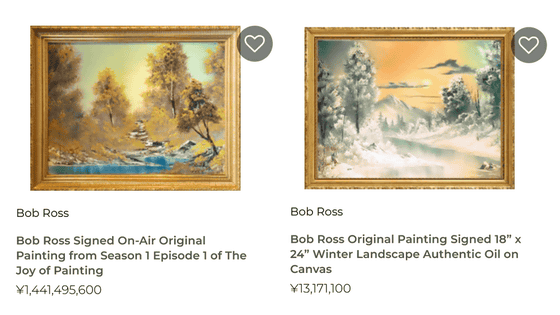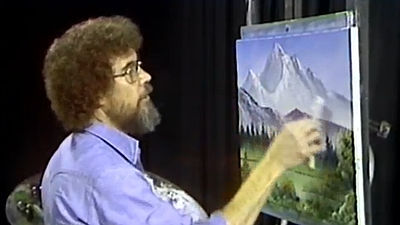Bob Ross, who made his name with 'Bob's Art Class,' reveals his 'unknown life,' including his time in the military and the story behind the show's creation

Bob Ross, the host of the TV show 'Bob's Art Class,' in which he draws beautiful landscapes that could be mistaken for photographs in just 30 minutes, along with his famous line, 'There are no failures, everything is a fun accident,' was known as a person who does not reveal much about his private life. The episodes of Bob's childhood, youth, and his time as a soldier before he became a legendary painter are compiled in a movie on the YouTube channel '
The Surprisingly Mysterious Life of Famed Artist Bob Ross - YouTube
The show was broadcast in the 1980s and gained many fans in Japan when it was broadcast on satellite television, featuring painter Bob Ross.
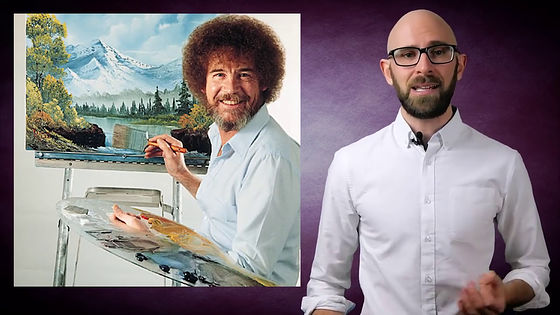
However, very little is known about Bob, possibly because he rarely gave interviews.
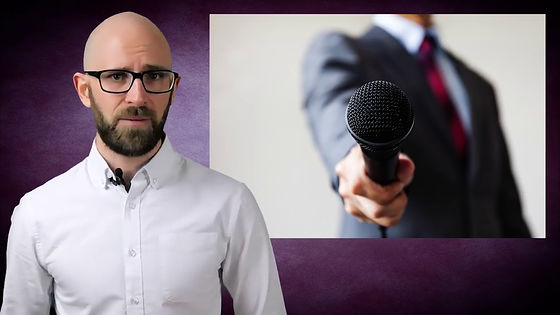
Bob himself responded, 'I've never turned down an interview request. I just wasn't asked.'
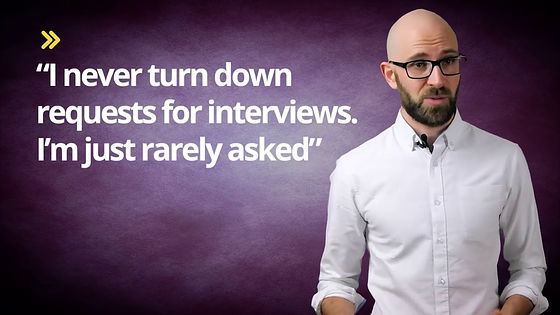
On the other hand, Bob himself also chose to live in hiding. At one point, PBS, the American public broadcasting station that broadcasts 'The Joy of Painting,' lost track of Bob and was unable to contact him until he finally called and said, 'I've moved to Orlando.'

Due to his emphasis on privacy and his often tearful attitude during interviews, many details about Bob's life remain hazy and unclear.

The same can be said about the book about Bob himself, '

This remains true even now that Bob has passed away, and the company he founded, Bob Ross Inc., continues to maintain a very strict stance on intellectual property and his privacy.

The only approved content about Bob's life to date is a PBS documentary called 'Bob Ross: The Happy Painter,' which is available to watch as a PBS subscription or by purchasing

The book also reveals that Bob had several close friends, but none of them wanted to talk in detail about them, out of respect for his cherished privacy.

'Today I Found Out' looks back on Bob's life based on scraped information. Bob was born in Daytona (Daytona Beach), Florida in 1942 to his father, Jack, a carpenter, and mother, Ollie, a waitress. His parents later divorced and each remarried when Bob was a teenager.

As a child, Bob enjoyed caring for injured animals, much to his parents' surprise, but they gradually grew accustomed to having an alligator in their bathtub and an armadillo in his room.

Bob dropped out of school in the ninth grade to help his father with his carpentry business. While working as a carpenter, Bob lost the index finger on his left hand in an accident. In 'Bob's Art Class,' the finger is hidden by the palette he holds in his left hand.

At age 18, Bob joined the Air Force and moved to Alaska, but he doesn't talk much about it because he says it made him a ruthless person.

Looking back on that time, Bob describes himself as 'the kind of guy who made people scrub the latrines, make their beds, and yell at others for being late to class.'

The content suggests that Bob had a fiery personality, the opposite of the atmosphere shown on the show. During his time in the Air Force, he had a reputation for being a 'guy who would give you work that was so hard it would crush your balls,' and his subordinates even gave him the nickname 'Bust'em up Bobby.'

During his 20 years in the Air Force, Bob developed his own style through the art classes he attended. He says he was lucky to discover that he was 'normal.'

At the time, abstract painting was the norm, so naturalistic painters like Bob were considered outcasts. 'They were trying to teach people what makes something look like a tree, but they weren't teaching them how to paint a tree,' Bob recalls.

Bob was inspired by watching the PBS television program 'The Magic of Oil Painting.' In this program, German painter Bill Alexander paints a landscape in oil in a 30-minute segment. The technique is called

The actual program is still available. From the camera composition and the style of starting with painting the background on a white canvas with a large brush, to the way he paints the mountain's expressions, to the way he sloshes the brush after washing it to dry it, this is the origin of Bob. In fact, Alexander's program aired on PBS from 1974 to 1982, and Bob's program started in 1983 as a successor to Alexander's program.
Bob, who was 'influenced' by Alexander, followed that style in his own show that started later, but Alexander expressed strong displeasure with the content.

Bob absorbed Alexander's style and, while serving in the Air Force, became very successful selling his artwork, which depicted Alaskan mountain and forest scenes on beautiful gold plates.

Bob became famous in the local area and taught painting to children and the elderly while selling his paintings. He even opened an art class and decided to resign from the Air Force after 20 years in the service.

Bob returned to his native Florida and visited Alexander to learn the details of the alla prima technique. Alexander, who had a TV show, kindly used his free time to teach Bob the 'wet on wet' technique, but at the time he probably had no idea that Bob would soon take his place.

After a few months of this relationship, Bob was offered a job as a traveling instructor for Alexander's company, Alexander Magic Art Supply Company.

As he continued working, Bob became popular for his soft-spoken style, his drawing technique, and his famous lines such as, 'There are no mistakes, they're all fun accidents.' There, he met a woman named Annette Kowalski who would change Bob's life forever.

Kowalski was so enthralled with Bob's style that he became convinced that if he could package the experience of painting with Bob, the two of them could make a fortune.

After discussions with Kowalski and her husband, Bob decided to leave Alexander's company and start his own painting classes business.

Kowalski had no doubts about the success of the business and invested his own money to support Bob's business. The loss in the first year was $20,000 (equivalent to $45,000 today: about 5 million yen).

At this time, Bob started his trademark afro hairstyle. The reason was that 'I didn't have to go to the salon once a week and pay $5 for months of TV.' Bob continued to wear his afro until the end of his life, but he was tired of the style at the end.

While Bob's exact path from 'stingy $5 to getting an afro' to 'having a TV show' remains a mystery, there are two opposing stories about the episode that caught the attention of PBS television.

First, a commercial he shot for his teacher, Mr. Alexander, caught the attention of PBS executives, and second, Mr. Kowalski filmed Bob's classroom and sold it to PBS.

That theory seems correct, but what Bob always implemented was a success method known as the '

During the first shoot, Bob made a point of speaking to the person behind the camera, rather than directly into it, to give the impression that he was giving a private painting lesson.

The surprisingly modest set also helped Bob impress, and while the original aim was for the set to 'not get in the way of the art', it ended up highlighting everything else.

It also seems that he was very particular about the way he chose his costumes. The reason for this was to prevent people from identifying which episode he was on by the clothes he was wearing, but in the end, Bob's costumes always consisted of jeans and a casual shirt. Also, it seems that he was careful to lightly sand the palette before filming to prevent light reflections.

Bob's official website states that the show was made without any rehearsals, but since the paint colors used in each episode were specified, it is believed that the content was actually pre-determined to some extent.

It is also said that three paintings were done for each episode of the show. The first was done beforehand to serve as a reference for the actual shoot. The second was used in the show, and the third was done after the shoot, with a still cameraman present, to take a photo for a later publication of the art collection.

What is surprising is that Bob did not accept any fee from his TV appearances, but instead donated it to PBS, a public broadcasting company. Also, with one exception, the works he painted on the show were never sold, and were all donated to various places free of charge.

Instead, Bob has had great success selling painting supplies under his name, and most of the thousands of paintings he produced throughout his life were donated to charities and auctions.

He also didn't like his paintings being displayed in museums, because, he said, 'Many artists want their names to be known, especially by their peers. But I achieved that on TV a long time ago, so I don't need that anymore.'


Bob, who valued privacy, only told his family and close friends that he had lymphoma. He continued to paint and record shows until just before his death in 1995 at the age of 52. The simple gravestone where Bob rests now reads 'Bob Ross, Televison Artist.'

Related Posts:
